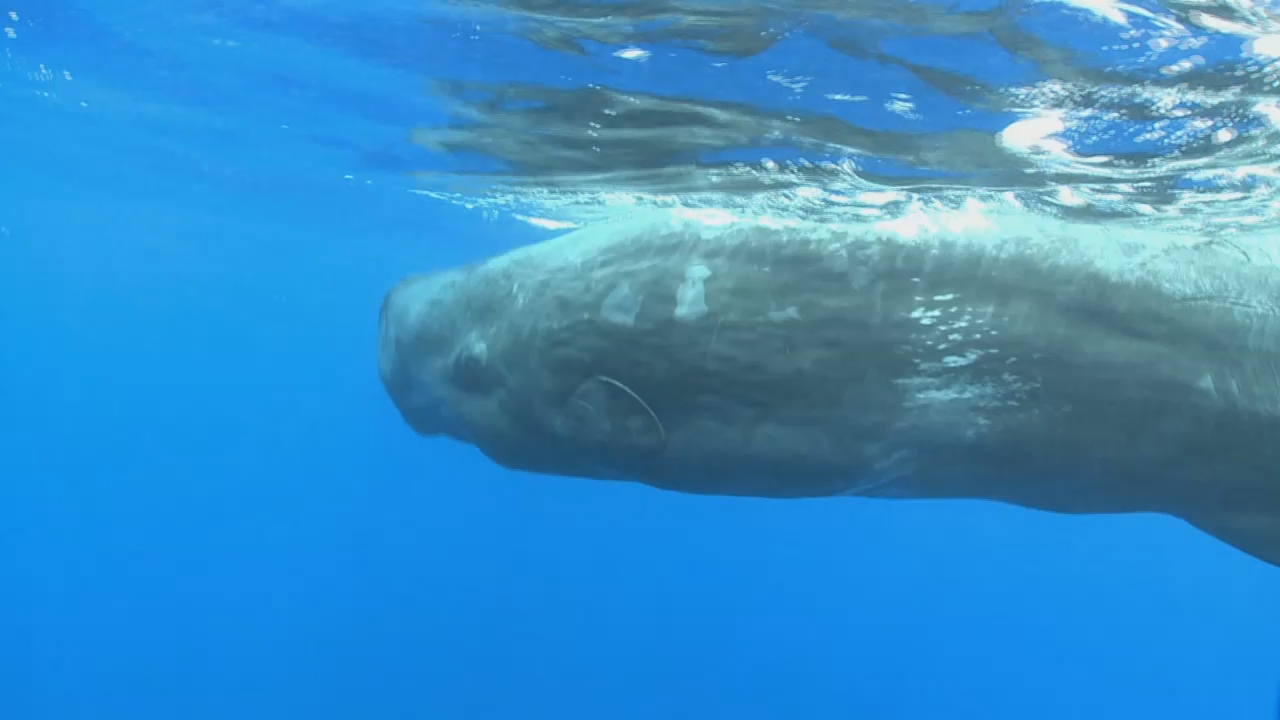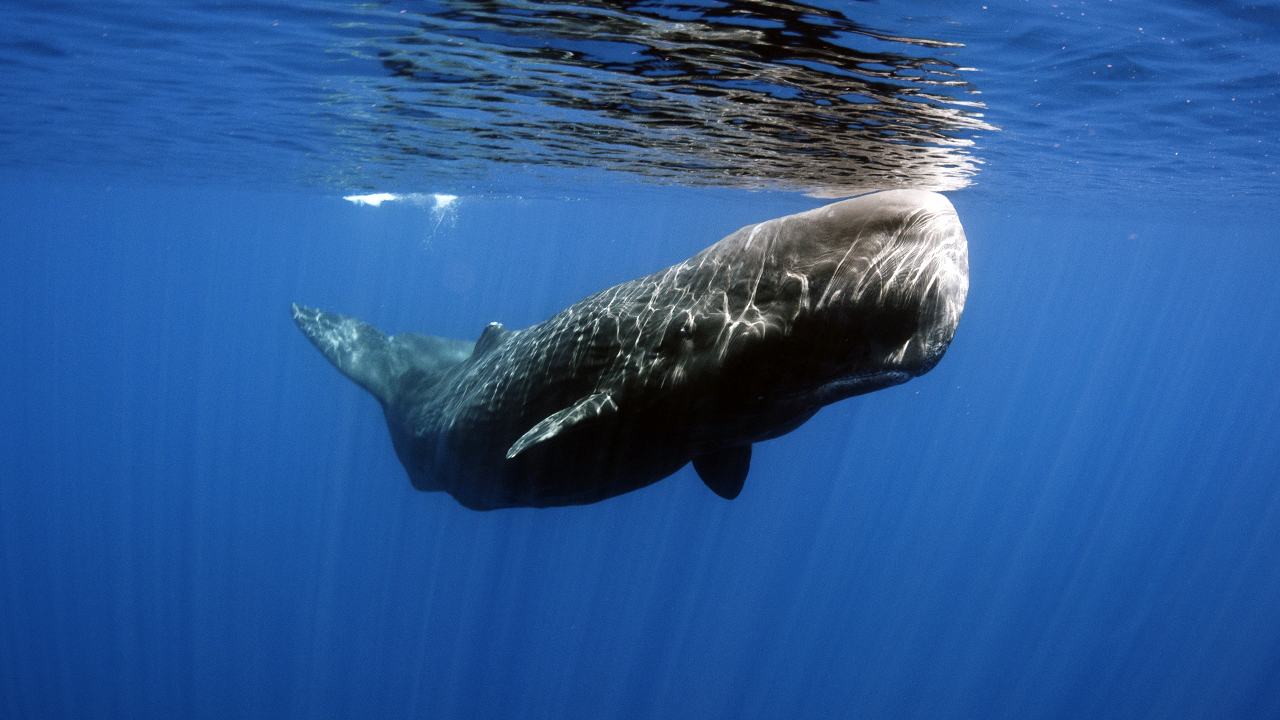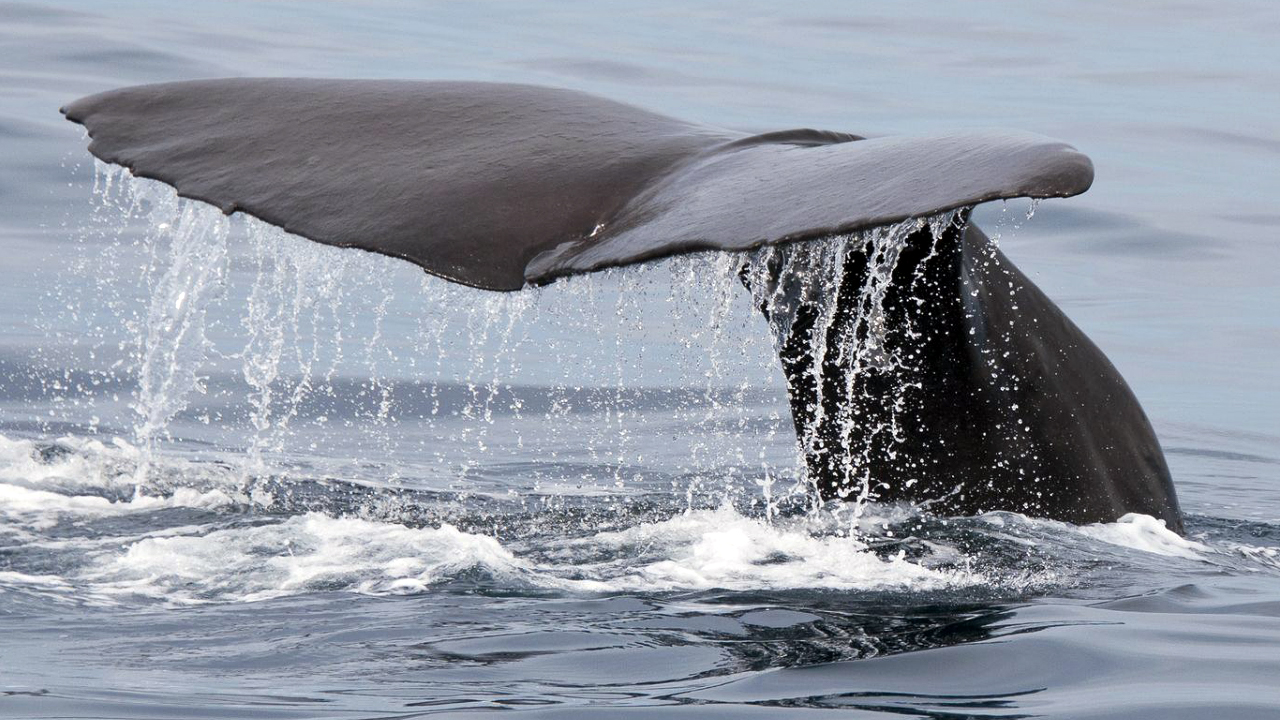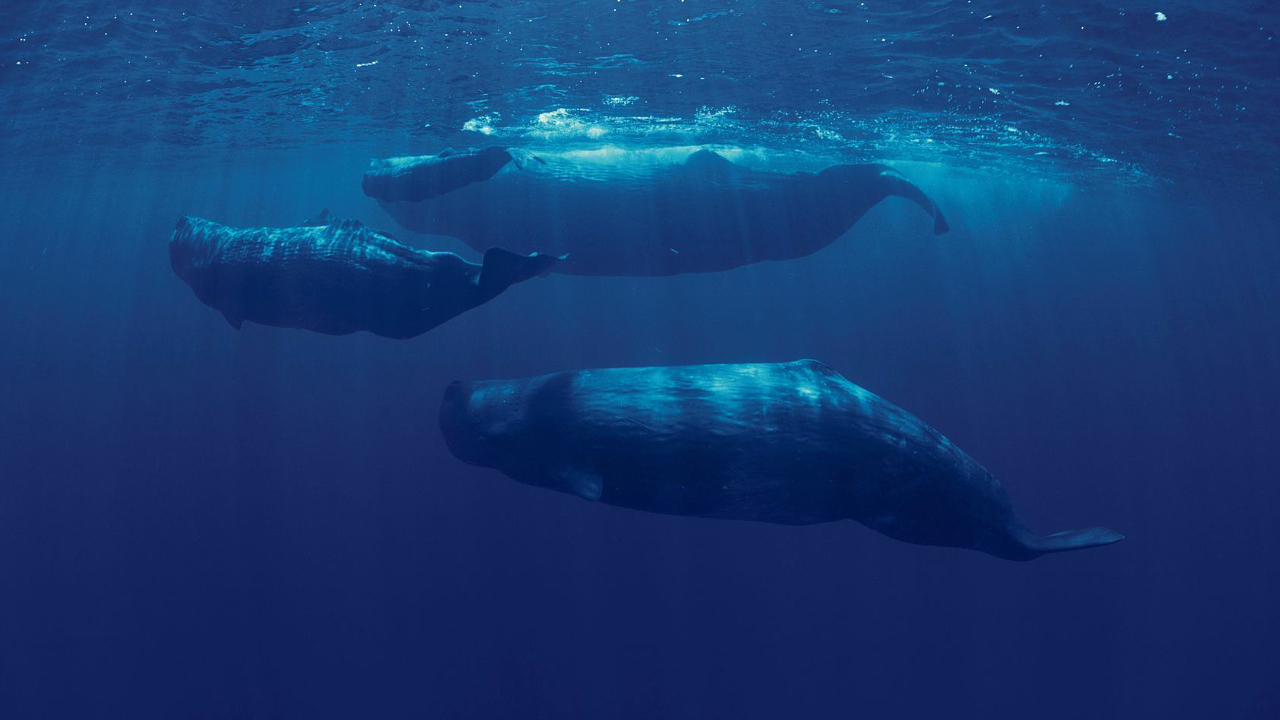Sperm whale
Physeter macrocephalus
-
 Sperm whales are the largest toothed whales. Adult males grow to be about 17–20 m long, weighing about 36–45 tonnes. Females are smaller, about 11–13 m long, weighing about 14–18 tonnes. The sperm whale was named for the valuable spermaceti oil (wax) that this whale produces in the spermaceti organ (located in its head).
Sperm whales are the largest toothed whales. Adult males grow to be about 17–20 m long, weighing about 36–45 tonnes. Females are smaller, about 11–13 m long, weighing about 14–18 tonnes. The sperm whale was named for the valuable spermaceti oil (wax) that this whale produces in the spermaceti organ (located in its head). -
 The role of the spermaceti is not fully understood, but it likely serves as a sound amplifier when the whale produces its powerful sonar pulses. The oil could also be involved in buoyancy regulation since oil’s density changes according to depth and temperature.
The role of the spermaceti is not fully understood, but it likely serves as a sound amplifier when the whale produces its powerful sonar pulses. The oil could also be involved in buoyancy regulation since oil’s density changes according to depth and temperature. -
 The sperm whale has a huge brain that weighs about 9 kg. It is the largest brain of any animal. The four-chambered heart of the average sperm whale weighs about 126 kg, about as much as two average adult human beings. Sperm whales are carnivores that mostly eat giant squid that live on the ocean bottom at great depths. They also eat fish, octopus and skate. An adult sperm whale can eat about a tonne of food each day.
The sperm whale has a huge brain that weighs about 9 kg. It is the largest brain of any animal. The four-chambered heart of the average sperm whale weighs about 126 kg, about as much as two average adult human beings. Sperm whales are carnivores that mostly eat giant squid that live on the ocean bottom at great depths. They also eat fish, octopus and skate. An adult sperm whale can eat about a tonne of food each day. -
 The groups are composed of related females and their calves. The average size of these female groups is 12 animals. These tightly bonded groups work as a team when hunting and protecting the young and each other from danger.
The groups are composed of related females and their calves. The average size of these female groups is 12 animals. These tightly bonded groups work as a team when hunting and protecting the young and each other from danger. -
 During birth, other females often form a circle around the mother to protect her and her calf. Males abandon their families around the age of 6 and join other male groups. Once males are fully mature and grown, they usually live a solitary life. They migrate to southern breeding grounds once they are mature to find females.
During birth, other females often form a circle around the mother to protect her and her calf. Males abandon their families around the age of 6 and join other male groups. Once males are fully mature and grown, they usually live a solitary life. They migrate to southern breeding grounds once they are mature to find females.
